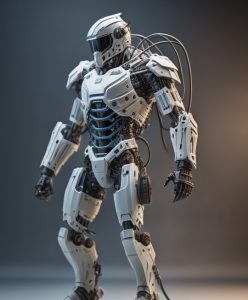
When we talk about exoskeletons, we imagine models for adults or even the elderly of the robotic type developed by Hyundai.
However, engineers from the Spanish National Research Committee have developed a model aimed at children. This development can not only help them move, but some of them may even save their lives.
The exoskeleton is made of aluminum or titanium and weighs 12 kg. It is intended for children aged 3 to 12 years who have been diagnosed with spinal muscular atrophy.
Spinal muscular atrophy is a fairly rare disease that involves decreased movement and progressive muscle weakness, which in some cases leads to the patient losing the ability to move independently. For children, this means that they will be bedridden for the rest of their lives. Scoliosis, osteoporosis, and pulmonary dysfunction are the result of lack of physical activity.
The exoskeleton is designed to allow children to go for daytime walks every day. This will keep the muscles active, preventing the development of osteoporosis.
Elena Garcia, a leading researcher at the CSIC Center for Automation and Robotics, noted that the device will be used in hospitals where children with spinal muscular atrophy undergo training therapy. The main goal of this project is to teach them to walk and maintain the mobility of their limbs and muscles.
The project includes the development of a prototype, which costs $56,000. In addition, the authors of the exoskeleton plan to rent it to families for about 800 euros per month, and then consider the possibility of helping them economically.
The mechanism is being developed in close cooperation with specialists from the San Joan Deu Hospital in Barcelona and the Ramon i Cajal University Hospital in Madrid.
This model contains an intelligent modification system that adapts to the symptoms of each individual child.
The exoskeleton works like this:
- The microprocessor built into it detects the child’s muscle movements.
- It then activates five motors on each leg so that the patient can take the first step.
- The device’s charge lasts for one hour of a full walk.
- The motors use sensors that signal the slightest intention to move by the user.
It should be noted that the exoskeleton is designed to grow with the child who uses it.
In Spain, it was successfully tested on three child volunteers in Madrid and Barcelona.
Thus, children with a rare, complex, and often fatal diagnosis were given the opportunity to experience the joy of walking and moving independently.

